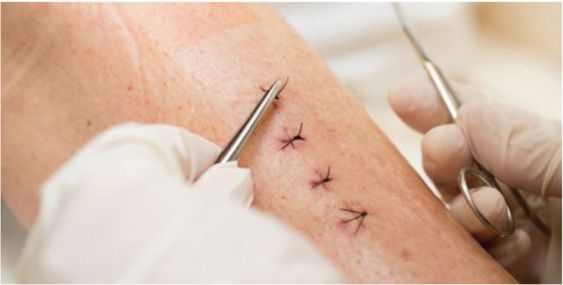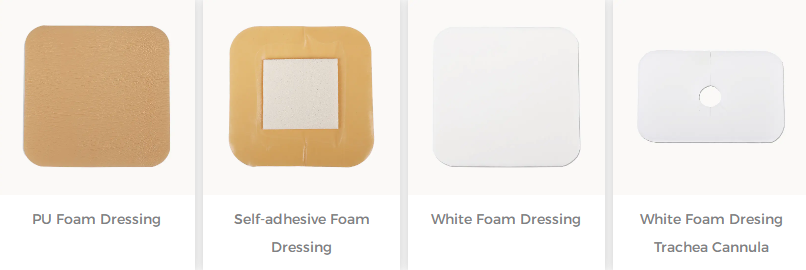Few people care about the healing process after the surgical wound is sutured. Most people only pay attention to the healing result and whether scars are left. This article wants to take you understand the principle of surgical wound healing, so come and take a look with me.
What is a Surgical Wound?
Surgical wounds are usually incisions made by a scalpel in the skin. Depending on the size of the incision and its location, there are two different types of wounds :
1. Closed Surgical Wound: A simply sutured surgical wound whose edges have been closed in the operating room with sutures, staples, or adhesive sutures. There are no lesions, it is visually distinguishable, and it heals quickly.
2. Postoperative open wound: This kind of wound is a wound whose edges cannot be closed due to severe loss of skin tissue. Generally, the wound is relatively deep, and a drainage tube will be placed in the wound to promote the drainage of the pus inside.
What are the types of surgical wounds:
· Class I - Clean, uninfected, primarily closed, and in a low-risk anatomical area
· Class II – clean contamination, no evidence of infection, but possibly in high-risk anatomical areas
· Class III – Contaminated, possibly when an object comes into contact with a wound of increased risk, such as a gunshot wound
· Class IV – Dirty contamination or dirty infection, deactivated tissue, possible exposure to materials such as feces
What postoperative complications can occur with surgical wounds?
Most complications tend to occur within the first 30 days after surgery. A portion of the wound will open, usually 5-8 days after surgery. And excessive drainage or bleeding may be an early sign of dehiscence, while the most worrying sequelae are exposure to underlying tissues and organs. Seromas, which are collections of serous fluid in the wound bed, may appear localized to the surgical site as swelling, fluctuating, and exhibiting significant fluid drainage from the wound. Depending on the severity, they may require surgical repair to drain. The risk of infection is also increased by the presence of a seroma, which is a collection of blood in the wound bed that requires urgent surgical repair. SSI occurs in approximately 2-4% of all surgical patients. Not only does it lead to mortality and morbidity, but it can also lead to hospital readmissions.
Signs of SSI may include:
1. Wound infection
2. erythema
3. fever
4. local pain
5. scar stench
How should wounds be treated after surgery?
1. For surgical wounds that are closed after surgery, normal saline can be used to clean them after surgery, and then an appropriate functional dressing can be selected according to the exudate. If the exudate is relatively small, Hydrocolloid Dressing is suitable, which can provide A slightly acidic closed space that is conducive to wound healing. Silicone Foam Dressing can be used when there are a lot of exudates. After absorbing liquid, the surface layer of the dressing has a porous structure, low surface tension, no adhesion to the wound surface, good air permeability, elasticity, softness, Strong plasticity, and light weight, gas exchange is beneficial to wound healing, it will not bring pain to the patient when changing the dressing, and the operation is simple and convenient.
2. For postoperative open wounds, after removing inactivated tissue, if there is a sinus tract in the wound, Alginate Dressing can be used. It not only has the ability to absorb a large amount of liquid, but after absorbing exudate, it will expand and act as a gel. The gel helps create a moist environment for wound healing and can be completely peeled off without leaving fibers on the wound surface.
Postoperative wound care should pay attention to:
Be careful not to touch water during the wound healing period, and use a waterproof dressing to protect the surgical wound if necessary. Do not engage in strenuous physical labor, follow a healthy lifestyle (quit smoking and drinking ), supplement nutrition, and ensure adequate sleep.
For more information on Innomed® Silicone Foam Dressing, refer to the previous articles. If you have customized needs, you are welcome to contact us; we will serve you wholeheartedly. At Longterm Medical, we transform this data by innovating and developing products that make life easier for those who need loving care.
Editor: kiki Jia
Date: March 8, 2023

 English
English عربى
عربى Español
Español русский
русский 中文简体
中文简体








